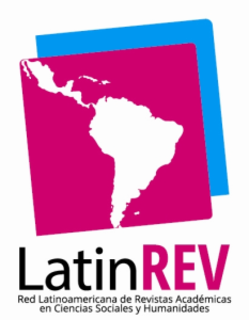UNIDADES DE CONSERVAÇÃO, SERVIÇOS AMBIENTAIS E O PAGAMENTO POR SERVIÇOS AMBIENTAIS: UMA ANÁLISE A PARTIR DA REBIO TINGUÁ
DOI:
https://doi.org/10.26512/2236-56562019e40161Palavras-chave:
unidade de conservação, reserva biológica, recursos hídricos, serviços ambientaisResumo
Devido ao estilo de vida atual de consumo e a falta de infraestrutura pública como saneamento básico, os recursos naturais estão sofrendo grandes impactos negativos, sobretudo, a água. Uma das estratégias de conservação dos recursos hídricos para manter sua qualidade e quantidade é, além do Código Florestal e da Lei das Águas, a criação de unidades de conservação (UC), principalmente as que são de proteção integral, visto não permitirem o uso direto dos recursos. Neste contexto, o objetivo do presente estudo busca contextualizar a Rebio Tinguá, destacar a relevância do serviço ambiental hídrico promovido na região da Baixada Fluminense, bem como analisar aspectos relacionadas ao Pagamento pelo Serviço Ambiental (PSA) pela produção hídrica enquanto compensação fi nanceira pelo serviço prestado, podendo tornar-se signifi cativa fonte alternativa de recurso considerando a carência de investimentos que a maioria das UCs recebem atualmente. Trata-se de pesquisa de caráter exploratório, em que diferentes fontes de consulta foram utilizadas, entre elas, artigos e textos científi cos. Também foram realizadas pesquisas de campo às captações de água existentes dentro da unidade objetivando o reconhecimento, registros fotográfi cos, localização e apontamentos diversos. Os resultados apontam que a história da serra do Tinguá está diretamente relacionada com suas águas. A região possui proteção desde 1880, época do Império, por conta dos seus mananciais que já abasteceram a nobreza da cidade do Rio de Janeiro. Em 1941 foi declarada Floresta Protetora da União e em 1989 passou a ser Reserva Biológica (REBIO). Atualmente, a REBIO do Tinguá possui 31 captações ativas de água administradas pela CEDAE dentro da unidade produzindo água de qualidade e, em quantidade, e que abastecem boa parte da população da Baixada Fluminense. Conclui-se que mesmo que este recurso seja para abastecimento humano, a captação e a distribuição devem ocorrer em conformidade com a Lei do SNUC e com a Política Nacional dos Recursos Hídricos, Lei 9433/1997. A concessão de outorga ocorreu sem o parecer e anuência da Unidade, e deveria haver uma compensação por este serviço ambiental promovido pela fl oresta existente e protegida enquanto REBIO, como previsto no artigo 47 do SNUC.
Downloads
Referências
ALMEIDA, F. P. (2014) Histórico de Criação das Categorias de Unidades de Conservação no Brasil. 247 p. Dissertação (Mestrado Profi ssional em Conservação da Biodiversidade e Desenvolvimento sustentável) – Instituto de Pesquisas Ecológicas. Nazaré Paulista.
ARAUJO, M. A. R. (2002) Unidades de Conservação no Brasil: da República à Gestão de Classe Mundial. 272 p. Belo Horizonte : SEGRAC,
BRAGA, B.; PORTO, M.; TUCCI, C. (2002) Monitoramento de Quantidade e Qualidade das Águas. In: REBOUÇAS (Org.). Águas Doces no Brasil: Capital Ecológico, Usos e Conservação. p. 635-649. São Paulo: Editora Escrituras.
BRASIL. Agência Nacional de Águas (2017) Pagamento por Serviço Ambiental, 55 p.
BRASIL. Agência Nacional de Águas. (2010) Atlas Brasil - Abastecimento Urbano de Água, 5 p.
BRASIL. Ministério do Meio Ambiente (2011) Contribuição das Unidades de Conservação Brasileiras para a Economia Nacional, 121 p.
BRASIL. Política Nacional de Recursos Hídricos (1997). Lei N° 9.433, de 8 de janeiro de 1997, Brasília.
BRASIL. Sistema Nacional de Unidades de Conservação (2000) – SNUC. Lei N° 9.985, de 18 de julho de 2000, Brasília.
BRAUMAN, K. A.; DAILY, G. C.; DUARTE, T. K.; MOONEY, H. A. The nature and value of ecosystem services: an overview highlighting hydrologic services. Annual Review of Environment and Resources, v. 32, p. 67-98, 2007. Disponível em: <http://www.annualreviews.org/doi/pdf/10.1146/annurev. energy.>. Acesso em: 01 jun. 2017.
CASTRO JÚNIOR, E. COUTINHO, B. H. FREITAS, L. E. (2009) Gestão da Biodiversidade e Áreas Protegidas. In: GUERRA, A. J. T. & COELHO, M. C. N. Unidades de Conservação: abordagens e características geográfi cas. p. 25-65. Rio de Janeiro. Bertrand Brasil.
CEDAE. Relatório Anual Tinguá – Informações aos Usuários. Disponível http:// www.cedae.com.br/div/RelatoriosQualidadeAgua/2016/Tingua.pdf 05/05/17.
GJORUP, A. F.; FIDALGO, E. C. C.; PRADO, R. B.; SCHULER, A. E. Análise de procedimentos para seleção de áreas prioritárias em programas de pagamento por serviços ambientais hídricos. Revista Ambiente e Água, v. 11, n. 1, p. 225-238, 2016. Disponível em; <http://www.scielo.br/scielo.php?pid=S19809&script=sci_ abstract&tlng=pt>. Acesso em: 01 jun. 2017.
INEA – INSTITUTO ESTADUAL DO AMBIENTE. (2015) Pagamento por Serviços Ambientais. Disponível em: http://www.inea.rj.gov.br/Portal/Agendas/ GESTAODEAGUAS/PagamentosproServiosAmbientais/ProjetosdePSA/Programa/. Acesso em: 01 de jun de 2017.
INSTITUTO BRASILEIRO DE ANÁLISES SOCIAIS E ECONÔMICAS -IBASE. (2006) Projeto Água em Unidade de Conservação, 30 p.
MEA - Millennium Ecosystem Assessment. Ecosystems and human well-being: Synthesis. Washington, DC: Island Press, 2005.
MEDEIROS, R. 2006. Evolução das Tipologias e Categorias de Áreas Protegidas no Brasil. Revista Ambiente e Sociedade, v. IX, n. 1, jan./jun., p. 41-64.
MORSELLO, C. (2011) Áreas protegidas públicas e privadas: seleção e manejo. 344 p. São Paulo: Annablume: Fapesp.
PAZ, R. J. FREITAS, G. L. SOUZA, E. A. (2006) Unidades de Conservação no Brasil: História e Legislação. 243 p. João Pessoa. Ed. Universitária UFPB, 2006.
POSTEL, S.; VICKERS, A. (2004) Incrementando a produtividade hídrica. In: Worldwatch Iinstitute. Estado do mundo: estado do consumo e o consumo sustentável. Salvador: Uma.
RECH, A. U. (2011) O valor econômico e a natureza jurídica dos serviços ambientais. In: RECH, Adir Ubaldo (org.). Direito e economia verde: natureza jurídica e aplicações práticas do pagamento por serviços ambientais como instrumento de ocupações sustentáveis. Caxias do Sul: Educs, 2011. P. 49/70.
SCHULER, A. E.; FIDALGO, E. C. C.; PRADO, R. B.; TURETTA, A. P. D. Manual para pagamento por serviços ambientais hídricos : seleção de áreas e monitoramento. Editoras técnicas. Brasília, DF: Embrapa, 2017. 78 p.: il. color. ; 22 cm x 16 cm.
SMITH, M.; DE GROOT, D.; PERROT-MAÎTRE, D.; BERGKAMP, G. Pay: establishing payments for watershed services. Gland: IUCN, 2008. Disponível em: <https://portals.iucn.org/library/sites/library/fi les/documents/2006-054.pdf>. Acesso em: 6 dez. 2017.
SUPERTI E.; Aubertin C. (2015). Pagamentos por serviços ambientais na Amazônia : o desvio de um conceito - casos do Amapá e Acre. Desenvolvimento e Meio Ambiente, p.35, 209-224.
VEIGA, N.; F. C. DA. A construção dos mercados de pagamentos por serviços ambientais e suas implicações para o desenvolvimento sustentável no Brasil. 2008. Rio de Janeiro, Tese (Doutorado) - Programa de Pós-Graduação em Desenvolvimento, Agricultura e Sociedade – CPDA, Universidade Federal Rural do Rio de Janeiro - UFRRJ, 2008.
WUNDER, S.; BORNER, J.; TITO, M. R.; PEREIRA, L. Pagamentos por serviços ambientais: perspectivas para a Amazônia Legal. Brasília: MMA, 2008.
Downloads
Publicado
Como Citar
Edição
Seção
Licença

Este trabalho está licenciado sob uma licença Creative Commons Attribution-NonCommercial-ShareAlike 4.0 International License.






